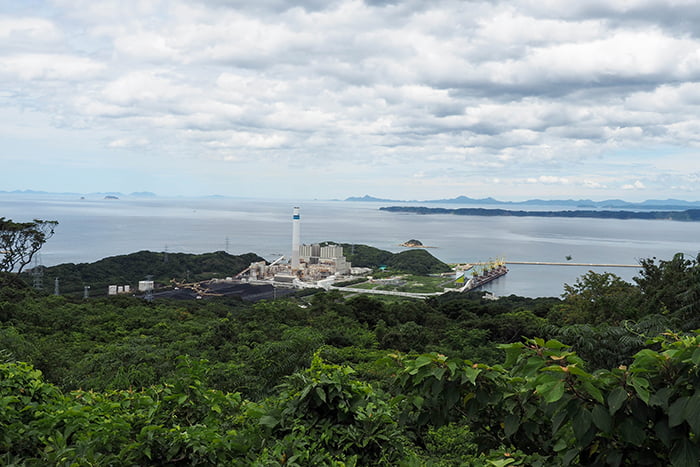On October 31, J-POWER announced updated plans for the Matsushima Thermal Power Station. First, J-POWER will be closing the Matsushima Thermal Power Station Unit 1 at the end of FY2024, and Unit 2 will be “mothballed” (idle) in preparation for the GENESIS Matsushima Plan. Second, J-POWER has postponed the GENESIS Matsushima Plan for two years. Previously, construction was scheduled to start in 2024 and to begin operation in 2026, but now both have been postponed by two years respectively.
In operation since 1981, Saikai City, Nagasaki’s Matsushima Thermal Power Station is one of Japan’s aging coal-fired power plants, with both Unit 1 and 2 using old technology. This so-called “Supercritical” (SC) technology emits a significant amount of greenhouse gas – about 6 million t-CO2 per year (based on FY 2019 actual). Considering that Japan has committed to achieving carbon neutrality by 2050 and a fully or predominantly decarbonized power sector by 2035, coal-fired power plants like the Matsushima Thermal Power Station must be phased out as soon as possible in order to fulfill its commitments.
The plan to close Unit 1 by the end of FY2024 can contribute to reducing GHG emissions by approximately 3 million t-CO2 per year (FY 2019 actual). While this decision comes late, it is welcomed.
On the other hand, despite postponing the GENESIS Matsushima Plan from its original schedule, J-POWER has indicated a strong intention to continue the project. This plan will add a gasification unit, gas turbine, and exhaust heat recovery boiler to the existing Unit 2. It aims to generate approximately 110,000 kW of electricity through a gas turbine using gasified coal, and supplying approximately 70,000 kW worth of steam to the existing Unit 2 boiler through a waste heat recovery boiler. With these measures, J-POWER is hoping to lower the power output of coal, maintain an overall output of approximately 500 MW (equivalent to that of current Unit 2), and eventually reduce greenhouse gas emissions. Additionally, in the future J-POWER is aiming to utilize co-firing with biomass/ammonia, CO2 separation and capture, and production of hydrogen from coal and generating hydrogen power.
However, according to J-POWER’s estimates, the emission reductions from the current GENESIS Matsushima Plan will only be about 10%. This is about the same as the latest coal-fired power generation technology (USC: ultra-supercritical) in terms of power generation efficiency. The timing and scale of the future co-firing with biomass/ammonia remains unclear. As for CO2 separation and capture from coal, hydrogen production, and power generation from hydrogen, the current technologies to separate and capture CO2 during hydrogen generation have only been demonstrated to process a relatively small amount (17%) of the gas produced by a coal gasification system. Furthermore, the transportation method and storage location for the vast amount of CO2 to be recovered have not yet been determined.
As announced, at the end of FY2024 Matsushima Thermal Power Station Unit 1 will be shut down, and Unit 2 will be mothballed. For the region in which the power plant is located, this will result in the same situation as a temporary closure of the power plant. However, even though it has been postponed for two years, the GENESIS Matsushima Plan is still planned to continue; the plan has not been withdrawn, nor has it been changed. The fact remains that the region will continue to have coal-fired power plants with significant environmental and economic impacts in the future.
To achieve true carbon neutrality, J-POWER should make the decision to cancel the GENESIS Matsushima Plan as soon as possible. Additionally, it should present phase-out plans for all of its thermal power plants, the Matsushima Thermal Power Station included, and encourage the municipalities where the power plants are located to promote regional development toward a decarbonized society. The government should set a 2030 phase-out target for all existing coal-fired power plants in Japan, develop concrete roadmaps to achieve this, and provide community support for a just transition while making steady progress in phasing out its coal-fired power plants.
References

